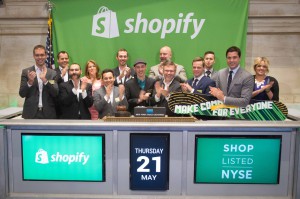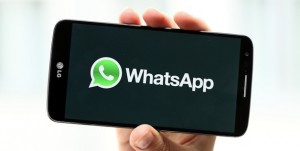Canadians love our Double-Double Tim Horton’s Coffee (that’s two sugars and two creams for non-northerners!) But the term “Double-Double” doesn’t just apply to the world of coffee. Have you ever wondered why some startups made it to Unicorn status while others didn’t?
Let’s explore the notion of “Double Innovation”. While Unicorns built amazing products with the right customer fit, these companies also innovated new go-to-market strategies. Meaning they developed innovative strategies beyond their product innovation to grow market share into the juggernauts they are today. In hindsight many of these strategies (referred often as growth hacks) now seem obvious; but good ideas always do.
Here are some well-known examples:
Shopify
Product Innovation: eCommerce Website Builder
Double Innovation: Lifetime revenue sharing with web designers
Shopify was not the first eCommerce/shopping cart website builder on the market when they launched. It was easy to use, easy to activate and allowed any business to be up and running online within minutes. Where they got creative was targeting website builders and designers, who were used to helping clients with a one-off custom templates. Shopify recognized there was an opportunity to grow by enabling anyone to become a partner. These partners then brought in new customers, brought these customers onto the Shopify platform and would then share in the lifetime value of that new customer. This motivated designers and web developers, because now they received an ongoing revenue stream from a business where it was usually one off contract work. Sounds pretty obvious now but it wasn’t when Shopify first launched the concept!
Product Innovation: Mobile-only messaging app
Double Innovation: Importing your contact list/payment sstrategy
When WhatsApp first launched, many people believed the messaging app space was already too crowded. Although a great product and user experience was created, the main obstacle for WhatsApp was to find a way to build awareness and growth with no real marketing budget. At the time, onboarding new customers in this space was historically painful. If you were the first person in your circle of friends to download the app, you would need to locate all your friends and then add them using some kind of handshake mechanism (like with BlackBerry where you shared some random code). It was a painful design experience for sure.
WhatsApp simply said, “You have all these people in your address book, let’s start there.” Again now looking in the rear-view mirror, this is an obvious onboarding technique. But at the time, the strategy was ground breaking. WhatsApp became so popular, the company took this one step further (and to SLOW down growth) decided to charge people for their app. Again, they brought the concept of asking people to pay ONE YEAR after using the app, and they built even more customer loyalty!
Gmail
Innovation Product: Free Webmail
Double Innovation: You can invite only 10 friends
 Let’s go back even further in time to see if this trend sticks. Remember Gmail’s launch in 2004 on Aprils Fools day! Now do you remember how you got your account? To make early adopters feel they were being invited to an exclusive club, you could only join using a code. Once you were in the club you could only invite 10 others. The impact of this was so significant and quick, people even went to eBay and paid up to $150 to get an invite code! It also helped that Gmail on the day of their launch offered 1GB, which was 500X the amount storage of other competitors, like Microsoft Hotmail, were offering at the time. And what’s even more interesting, was that Gmail had to launch in a controlled manner because they didn’t have enough servers to roll-out this new service!
Let’s go back even further in time to see if this trend sticks. Remember Gmail’s launch in 2004 on Aprils Fools day! Now do you remember how you got your account? To make early adopters feel they were being invited to an exclusive club, you could only join using a code. Once you were in the club you could only invite 10 others. The impact of this was so significant and quick, people even went to eBay and paid up to $150 to get an invite code! It also helped that Gmail on the day of their launch offered 1GB, which was 500X the amount storage of other competitors, like Microsoft Hotmail, were offering at the time. And what’s even more interesting, was that Gmail had to launch in a controlled manner because they didn’t have enough servers to roll-out this new service!
What This All Means:
Think about this for a minute, as a startup not only do you need to invent a new product but you need to INVENT a novel way to get to market whether its advertising, a growth hack, pricing or partner strategy, etc…. Other good examples are AirBnB with their automation to leverage CraigsList in finding new listings, Uber who has created a master city rollout plan where they time targeting cities at specific times such as election time for mayors to make it an election issue and so many more.
So without being a “Double-Double Innovator” you are most likely not going to get things started. And keep in mind these are not one–trick Unicorns. These startups execute more and more growth hack ideas brilliantly to help build month after month…
Do you have some other examples you want to share? Please reach out as I would love to hear them!!
 Jon Milne is the Managing Director of Innovation at Invest Ottawa. He oversees entrepreneurship and startups services, fostering collaboration between Invest Ottawa’s ecosystem and community stakeholders.Previously, Jon held roles at Irdeto, Software Theories Inc, IBM Canada, Corporate Renaissance Group and Public Works and Government Services Canada. He can be reached at jmilne@investottawa.ca
Jon Milne is the Managing Director of Innovation at Invest Ottawa. He oversees entrepreneurship and startups services, fostering collaboration between Invest Ottawa’s ecosystem and community stakeholders.Previously, Jon held roles at Irdeto, Software Theories Inc, IBM Canada, Corporate Renaissance Group and Public Works and Government Services Canada. He can be reached at jmilne@investottawa.ca








